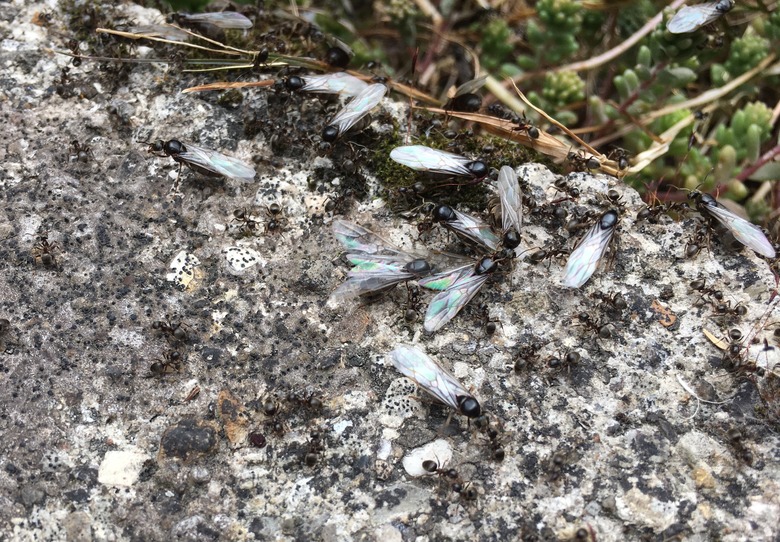Black Winged Ants That Sting
We may receive a commission on purchases made from links.
Flying, stinging ants seem like nightmare fuel, but not all flying ants bite or sting. The winged black ants that you might see in spring and summer aren't a species in and of themselves, as many people believe. While there are some winged ants, as a rule, the ones you see are merely regular ants that, for a short time, take to the air to mate. You might see large swarms of flying ants around trees or other high places, and sometimes they may even be seen in homes.
Flying Ant Background Information
Flying Ant Background Information
As social insects, ants colonize. A queen establishes these colonies, although most queens who attempt it don't survive, which is why there are initially so many females. The queen is a mature female who is initially winged and can live up to 15 years.
After the queen mates, she sheds the wings leaving only the wing muscles, which are used as a source of nutrients for her body to feed on while a colony is being developed. The colony grows and is established by nonsexual worker ants. The winged ants you might see are sexually mature and are created by the queen. They develop inside the colony and are fed by the worker ants.
Rearing Potential Colonies
Rearing Potential Colonies
Once a colony is established, which takes several years, the colony puts its efforts into rearing new ants that can reproduce. These newly formed ants are the swarms of winged ants that people often see. Some are female, but the majority are males.
The females are the potential queens of new colonies of ants. They can be identified as ants rather than common termites by their elbowed antennae, a divided thorax, large head, and abdomen. The wings are also transparent with clearly visible veins.
Insect Mating Habits
Insect Mating Habits
The newly created ants remain in the nest until the proper time for mating occurs, which can be a couple of times a year, usually after a heavy three- to five-day rain on a sunny, low-wind day. You'll most likely see this mating event in late spring or early summer when these ideal conditions are most common. The swarming behavior triggers are often synchronized so that other colonies in the area emerge together. This means large numbers of flying ants can appear suddenly and disappear just as suddenly.
Flying ants swarm together as a way to protect themselves from predators. The mating behavior commonly takes place all in one day, at which time the males all die. The females disperse and look for new areas to establish their own colonies.
The Insect Bite
The Insect Bite
A flying ant won't sting or bite unless its ant species stings or bites. For example, carpenter ants, with or without wings, can give a painful bite with their pincers and can spray formic acid into the bite, which can cause a painful sting. Regular fire ants can sting you, so winged fire ants can also sting if they get close enough.
Most winged ants won't bother you, but it's possible for the swarms to come near people, so you could get a bite or sting if you get too close. If this happens, you can put a cold compress on the area to help relieve the pain. While most people have minor reactions, severe allergic reactions can happen and require medical attention.
